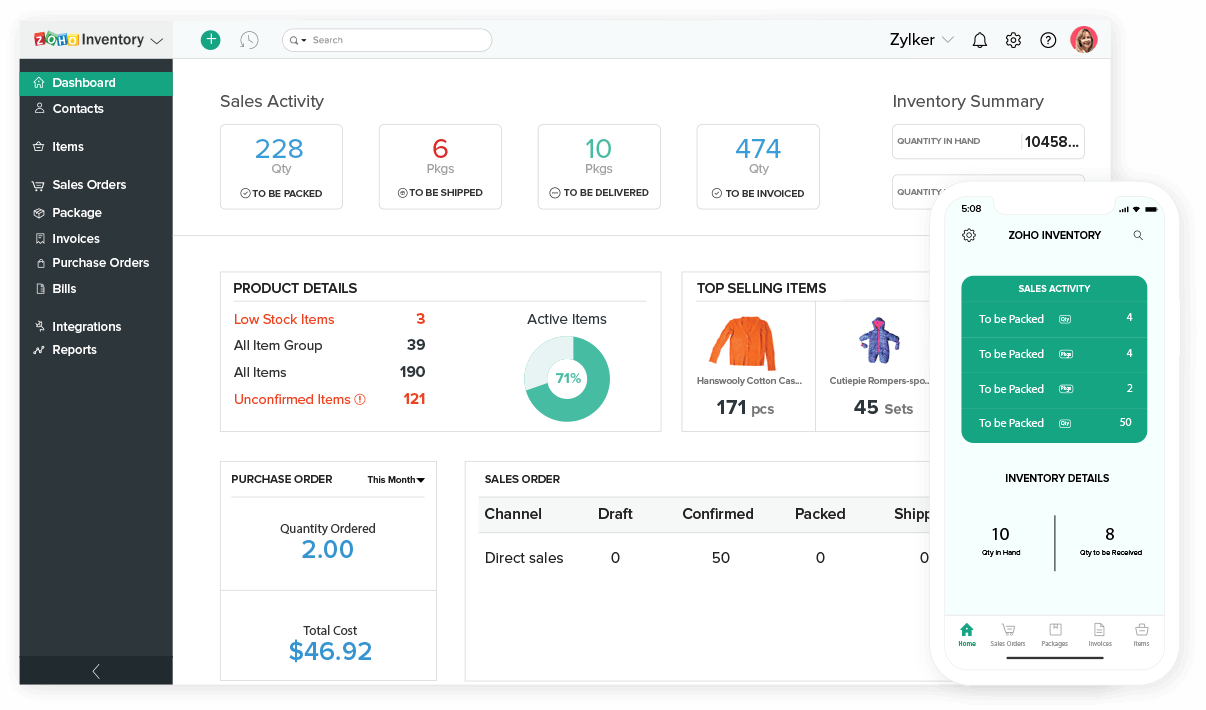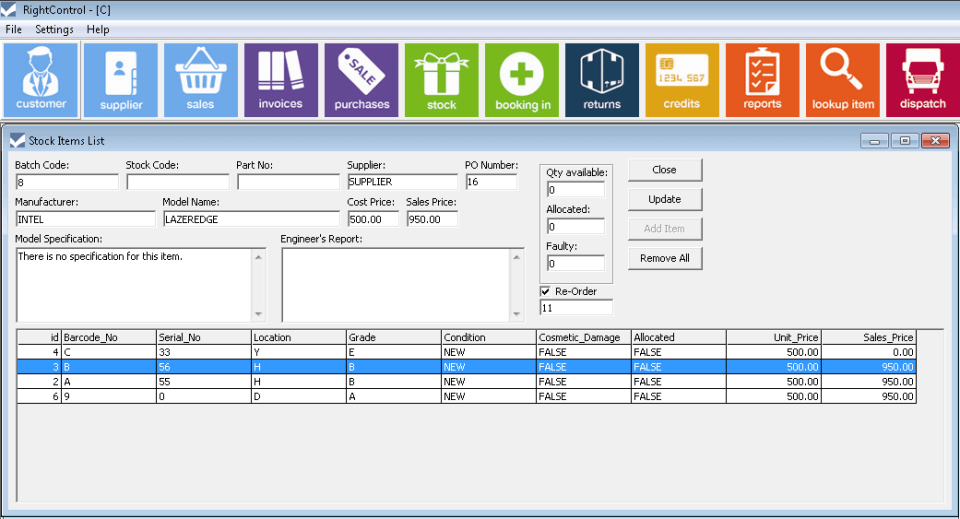Small business inventory management and POS software f has become an essential tool for businesses looking to streamline their operations and increase profitability. This comprehensive guide will provide you with an in-depth understanding of the key features, benefits, and best practices associated with these systems.
In today’s competitive business landscape, having a robust inventory management system is crucial for maintaining accurate stock levels, minimizing shrinkage, and optimizing cash flow. POS software, when integrated with inventory management systems, can further enhance customer service, streamline checkout processes, and provide valuable insights into sales trends.
Introduction: Small Business Inventory Management And Pos Software F
Inventory management is crucial for small businesses, as it enables them to track their stock levels, ensuring they have the right products in stock to meet customer demand while minimizing waste. An effective inventory management system helps businesses avoid stockouts, which can lead to lost sales and dissatisfied customers.
Point-of-sale (POS) software plays a vital role in inventory management. It provides real-time updates on inventory levels as sales are made, eliminating the need for manual tracking and reducing the risk of errors.
POS Software Features for Inventory Management
- Centralized inventory management:POS software allows businesses to manage inventory from multiple locations in a centralized system, providing a comprehensive view of stock levels.
- Automated inventory updates:POS software automatically updates inventory levels as sales are made, eliminating the need for manual adjustments.
- Low stock alerts:POS software can be set to generate alerts when inventory levels fall below a predefined threshold, helping businesses avoid stockouts.
- Inventory reporting:POS software provides detailed reports on inventory levels, sales trends, and other metrics, helping businesses make informed decisions about inventory management.
Key Features of Small Business Inventory Management and POS Software

Effective inventory management and point-of-sale (POS) software are crucial for small businesses to streamline operations, enhance customer service, and optimize profitability. These solutions provide a comprehensive suite of features that cater to the specific needs of small businesses.
Inventory Management Features
Inventory management software offers essential features that empower businesses to track inventory levels, manage orders, and generate valuable reports.
- Inventory Tracking:Real-time tracking of inventory levels across multiple locations, including stock on hand, allocated stock, and backorders.
- Order Management:Streamlined order processing, including order creation, fulfillment, and tracking, with automated notifications for low stock and reordering.
- Reporting:Comprehensive reporting capabilities, such as inventory valuation reports, stock turnover reports, and reorder point analysis, to provide insights into inventory performance.
POS Software Integration
POS software seamlessly integrates with inventory management systems, enabling businesses to manage sales, process payments, and update inventory levels in real-time.
- Sales Tracking:POS software records and tracks sales transactions, including itemized sales, discounts, and payment details.
- Payment Processing:Integrated payment processing capabilities, supporting various payment methods such as cash, credit cards, and mobile payments.
- Inventory Updates:Automatic inventory updates based on sales transactions, ensuring accurate inventory levels and preventing overselling.
Benefits of Using Small Business Inventory Management and POS Software

Integrating small business inventory management and POS software can offer a range of benefits, from improved inventory accuracy to enhanced customer service. Here’s how these solutions can empower small businesses:
Improved Inventory Accuracy and Reduced Shrinkage, Small business inventory management and pos software f
Inventory management software helps businesses maintain accurate and up-to-date inventory records. By automating inventory tracking, businesses can eliminate manual errors and gain real-time visibility into their stock levels. This improved accuracy reduces the risk of overstocking or understocking, leading to better inventory management and reduced shrinkage.
Enhanced Customer Service and Streamlined Checkout Processes
POS software plays a crucial role in enhancing customer service. By providing quick and efficient checkout processes, businesses can improve customer satisfaction and loyalty. POS systems also offer features such as customer loyalty programs, personalized recommendations, and integrated payment processing, which streamline the checkout experience and foster positive customer interactions.
Implementation and Integration

Selecting and implementing the right inventory management and POS software is crucial for small businesses. Here’s a comprehensive guide to help you get started.
To ensure a smooth implementation, it’s essential to align your software with your existing business processes. This involves understanding your current workflows, identifying areas for improvement, and customizing the software to meet your specific needs.
Choosing the Right Software
- Assess your business needs:Determine the essential features and functionalities you require, considering your industry, business size, and operations.
- Research and compare options:Explore various software providers, read reviews, and request demos to evaluate their offerings.
- Consider integration capabilities:Ensure the software can seamlessly integrate with your existing systems, such as accounting, CRM, and e-commerce platforms.
Implementation Best Practices
- Set clear goals and objectives:Define what you want to achieve with the new software and establish performance metrics to track progress.
- Involve key stakeholders:Engage employees from different departments who will use the software to ensure buy-in and gather valuable feedback.
- Provide comprehensive training:Train staff thoroughly on all aspects of the software, including its features, functionality, and integration with other systems.
- Monitor and evaluate performance:Regularly review system usage, track key metrics, and make adjustments as needed to optimize performance.
Best Practices for Small Business Inventory Management
Inventory management is a crucial aspect of small business operations, helping businesses optimize their stock levels, reduce waste, and improve overall efficiency. Implementing best practices can significantly enhance inventory management processes.
Optimizing Inventory Levels
- Establish minimum and maximum inventory levels to avoid overstocking or understocking.
- Use inventory forecasting tools to predict future demand based on historical data and trends.
- Consider seasonal variations and lead times when setting inventory levels.
Minimizing Waste
- Implement a first-in, first-out (FIFO) inventory system to ensure older inventory is sold first.
- Regularly review inventory and identify slow-moving or obsolete items.
- Consider offering discounts or promotions on excess inventory to reduce waste.
Regular Inventory Audits and Cycle Counting
- Conduct regular physical inventory audits to verify the accuracy of inventory records.
- Implement cycle counting, where a portion of the inventory is counted at regular intervals to detect discrepancies early on.
- Use inventory management software to automate inventory tracking and facilitate audits.
Case Studies and Examples
Numerous small businesses have experienced significant benefits from implementing inventory management and POS software. These real-world examples showcase the challenges they overcame and the positive outcomes they achieved.
One notable case study is a small retail store that struggled with manual inventory tracking. The process was time-consuming, error-prone, and often led to stockouts. By implementing an inventory management system, the store gained real-time visibility into its inventory levels, reduced shrinkage, and improved customer satisfaction by always having the products customers wanted in stock.
Challenges and Benefits
- Challenge:Manual inventory tracking was inefficient and inaccurate.
- Benefit:Real-time inventory visibility and reduced shrinkage.
- Benefit:Improved customer satisfaction due to increased product availability.
Another successful example is a small restaurant that faced challenges with managing its POS system and inventory. The restaurant experienced long lines, order errors, and difficulty tracking sales data. By implementing a POS software solution, the restaurant streamlined its operations, reduced wait times, improved order accuracy, and gained valuable insights into its sales performance.
Challenges and Benefits
- Challenge:Inefficient POS system and manual inventory management.
- Benefit:Streamlined operations and reduced wait times.
- Benefit:Improved order accuracy and reduced errors.
- Benefit:Enhanced sales tracking and data analysis.
These case studies demonstrate the tangible benefits that small businesses can achieve by implementing inventory management and POS software. By overcoming challenges related to manual processes, these businesses have improved their efficiency, accuracy, and profitability.
Future Trends in Small Business Inventory Management and POS Software

The future of inventory management and POS systems for small businesses is shaped by emerging technologies and trends that promise enhanced efficiency, accuracy, and customer experience.
Mobile Devices
Mobile devices are transforming inventory management and POS operations. Mobile apps allow businesses to access real-time inventory data, process sales, and manage customer transactions from anywhere. This mobility empowers employees to stay informed and productive even when away from the physical store.
Cloud Computing
Cloud-based inventory management and POS systems offer several advantages over traditional on-premise solutions. They provide scalability, remote access, and automatic software updates. Businesses can access their inventory data and POS functionality from any device with an internet connection, reducing IT infrastructure costs and increasing flexibility.
Artificial Intelligence
Artificial intelligence (AI) is revolutionizing inventory management and POS systems. AI-powered algorithms can automate tasks such as demand forecasting, inventory optimization, and fraud detection. This frees up business owners and employees to focus on more strategic tasks, improving efficiency and profitability.
Conclusion
By leveraging the power of small business inventory management and POS software, businesses can gain a competitive edge, improve customer satisfaction, and drive long-term growth. As technology continues to evolve, these systems will become even more sophisticated, offering businesses new and innovative ways to manage their inventory and streamline their operations.
FAQ
What are the key features to look for in small business inventory management software?
Essential features include inventory tracking, order management, reporting, and integration capabilities with POS systems.
How can POS software enhance customer service?
POS software can improve customer service by providing quick and accurate checkout, tracking customer preferences, and managing loyalty programs.
What are the benefits of using small business inventory management and POS software?
Benefits include improved inventory accuracy, reduced shrinkage, enhanced customer service, streamlined checkout processes, and valuable sales insights.